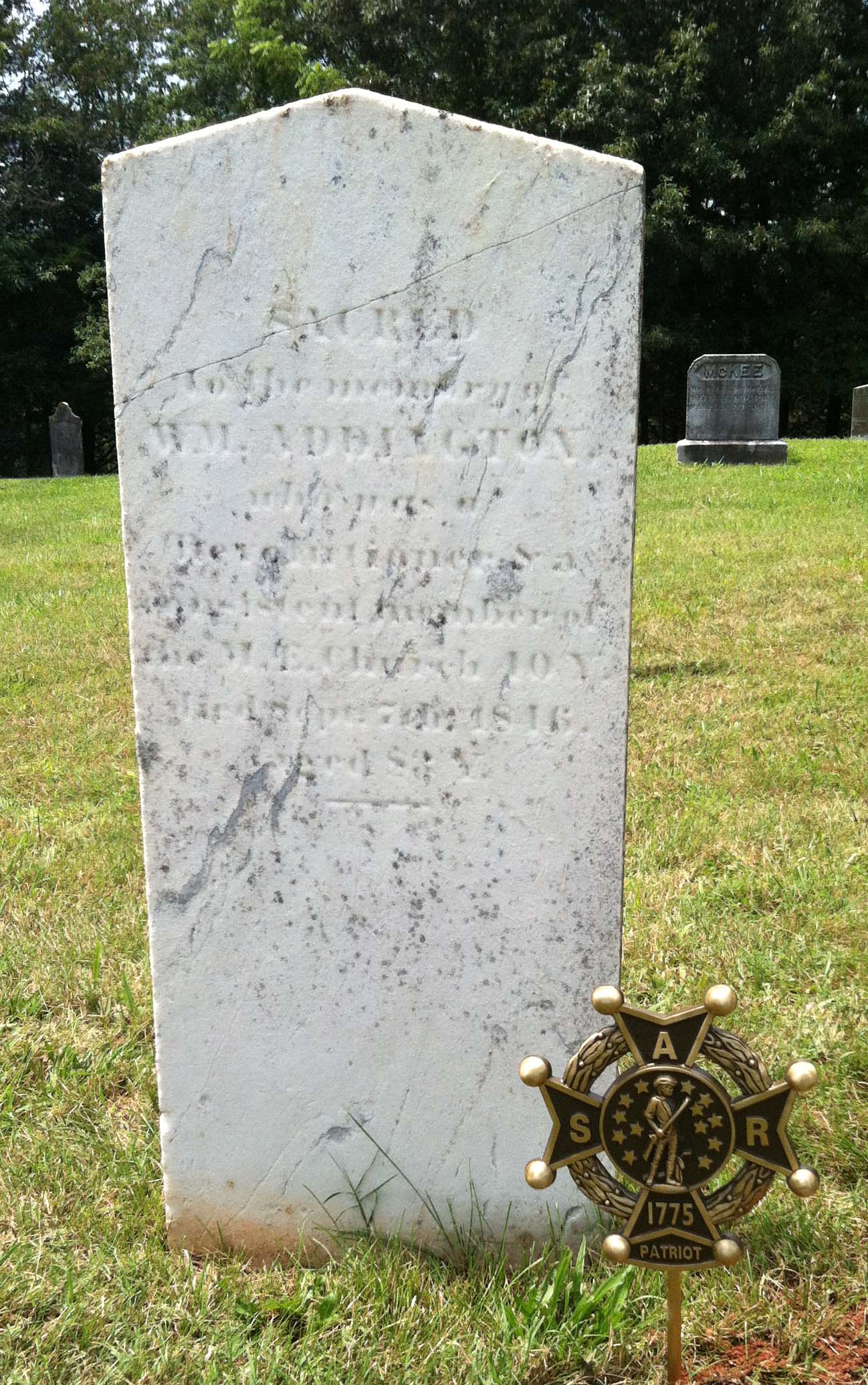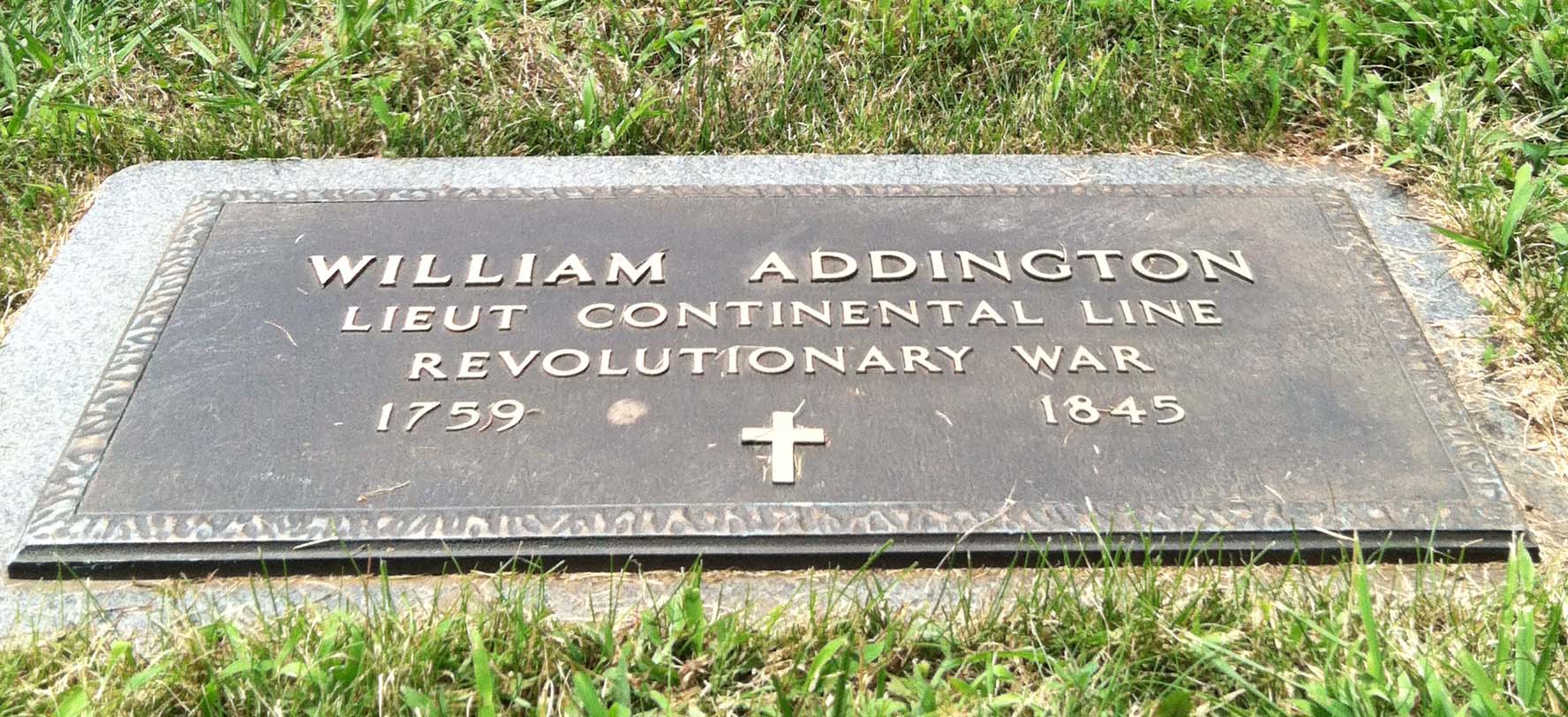William ADDINGTON
SAR Patriot #:
P-101732
The following information was assembled from numerous sources and cannot be used directly as proof of Qualifying Service or Lineage.
It is considered a research aid and is intended to assist in locating sources that can be used as proof.
State of Service: SC
Qualifying Service: Lieutenant
DAR #: A000796
Birth: 1759 / Union / SC
Death: 08 Sep 1845 Blairsville / Union / GA
Qualifying Service Description:
- Lt - Capts William Young, James Burton, Col Brandon, Union Co., SC
- Seige of Ninety-Six
Additional References:
- Pension Number: S*W5598
- Moss. Roster of SC Patriots, pg 7
- Payne, Vol 1, GA Pensioners , pg 162-163
Spouse: Delilah/Dee Duncan
Children: John; Elizabeth/Betsy; James; Moses; William; Martha; March; Henry; Delilah; Mary;
Members Who Share This Ancestor
| Date Approved | Society | ACN | SAR Member Info | Lineage via Child | View Application Detail | |
|---|---|---|---|---|---|---|
| 1975-09-15 | AZ | Unassigned | Loyal Randolph Addington (107824) | William | ||
| 1977-02-08 | TX | Unassigned | Ray Albert Larner Sr (112337) | James | ||
| 1986-02-13 | GA | 228256 | Judson Wheeler Roberts (127094) | James | ||
| 1995-09-14 | GA | Unassigned | James Larry Wilson (145172) | Elizabeth | ||
| 1996-01-25 | GA | 204714 | Zachary Samuel Norville (145773) | John | ||
| 1997-03-21 | NC | 202216 | Martin Emory Kimsey (147988) | Moses | ||
| 1999-06-21 | TX | 3988 | Ronald L Gadberry (152121) | James | ||
| 1999-06-30 | CA | 3916 | Bruce Avona Davis (152180) | James | ||
| 2003-04-28 | GA | 16014 | James Ronald Turner (160250) | Elizabeth | ||
| 2005-06-02 | GA | 22820 | Franklin Shuratt Whitworth (165043) | James | ||
| 2005-06-02 | GA | 22821 | Christopher Coggins Whitworth (165044) | James | ||
| 2005-06-16 | GA | 22900 | Marcus Joseph Brandon Timms (165139) | John | ||
| 2011-05-05 | GA | 43664 | Jonathan Ryan Turner (179417) | Elizabeth | ||
| 2017-11-03 | DC | 78035 | Michael Thomas McCaul (205264) | James | ||
| 2017-11-03 | DC | 78036 | Michael Addington McCaul (205265) | James | ||
| 2018-12-21 | VA | 84289 | Wilburn Charles Dibling Jr. (209979) | Moses | ||
| 2021-01-15 | TX | 95141 | Chester Franklin Barnes II (217909) | Martha | ||
| 2023-09-01 | TX | 108838 | Jason Hitt Barnes (227739) | Martha | ||
| 2025-03-07 | TX | 115434 | Dale Robert Addington (232849) |
Location:
Franklin / Macon / NC / USA
Find A Grave Cemetery #:
Marker Type:
SAR
SAR Grave Dedication Date:
26 Jul 2014
Comments:
Directions to Cemetery / Gravesite:
Grave yard is on the right side of the church. Park in the parking lot on the right side of the church, go up the stairs, and the grave is in the second row. His headstone is hardly readable, but has a Veterans Administration brass foot marker with his name on it

